Common G‑Floor® Garage Flooring Installations
Many customers inquire as to the best methods for installing G‑Floor garage flooring. We have provided the following diagrams which demonstrate common installations for a single garage parking pad, double garage mat installation, or when three or more parking pads are being installed in the same space.
SINGLE PARKING PAD INSTALLATION
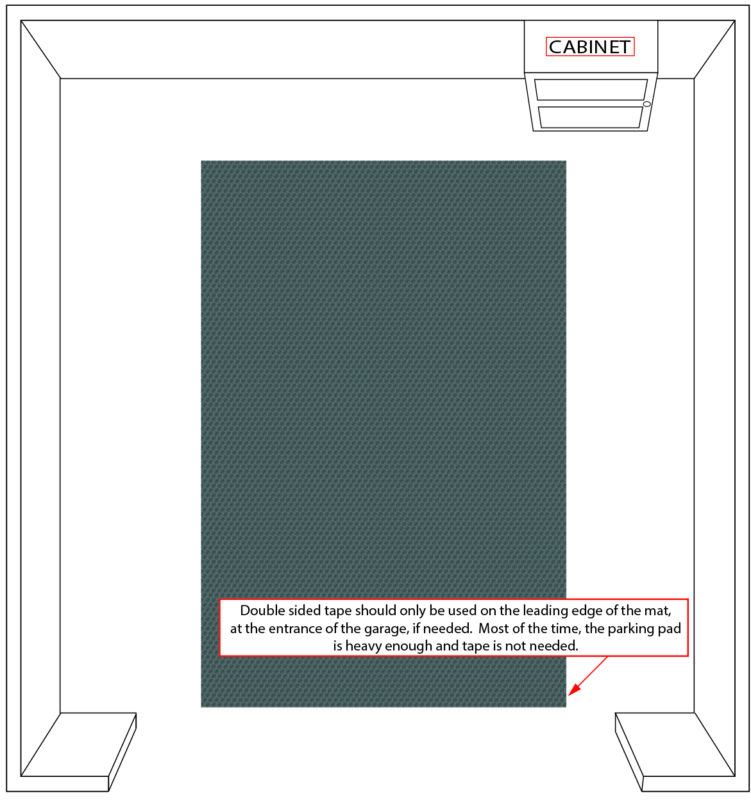
DOUBLE PARKING PAD INSTALLATION
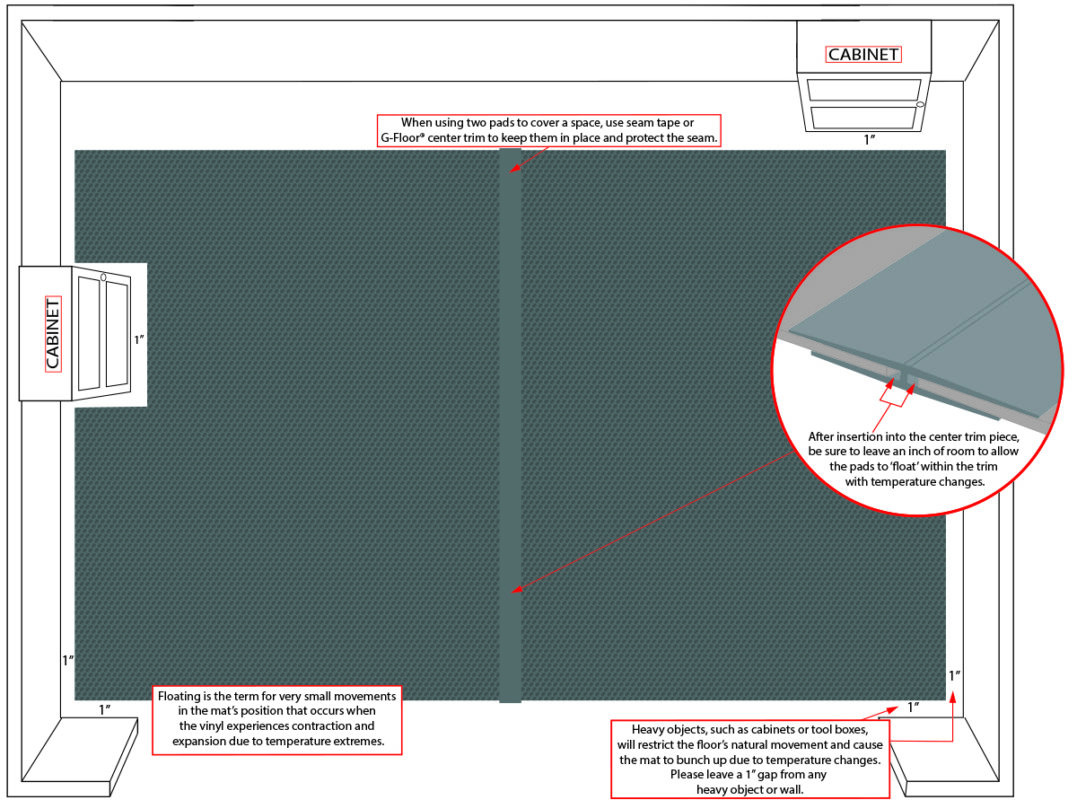
THREE OR MORE PARKING PAD INSTALLATION
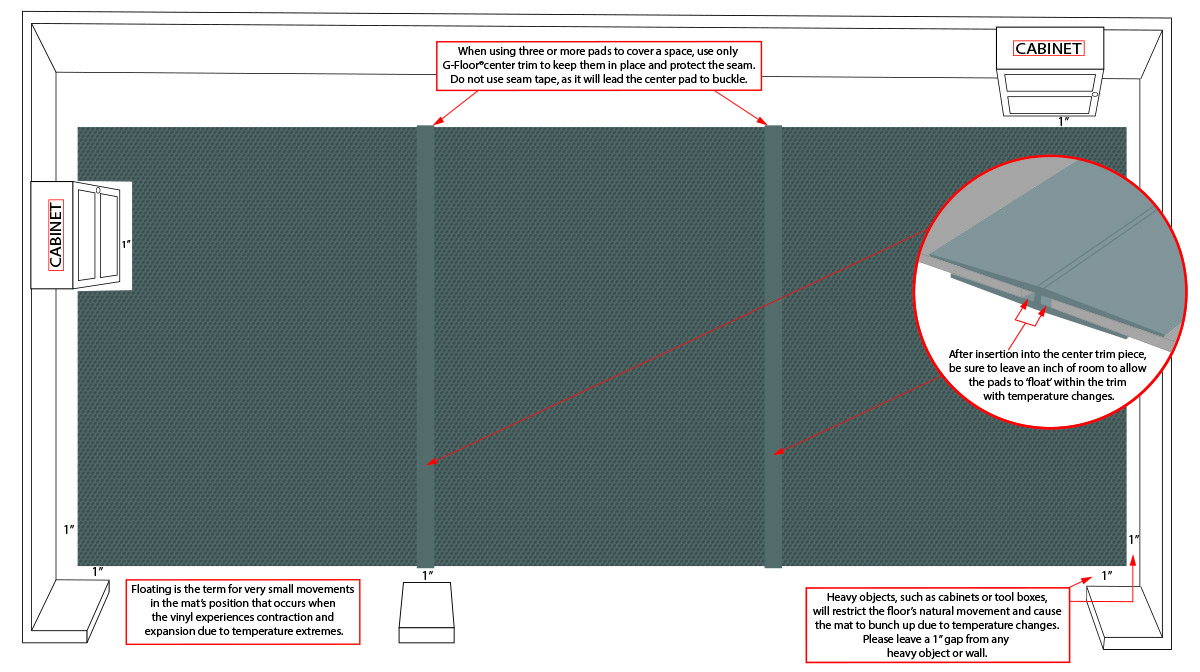
WALL-TO-WALL INSTALLATION
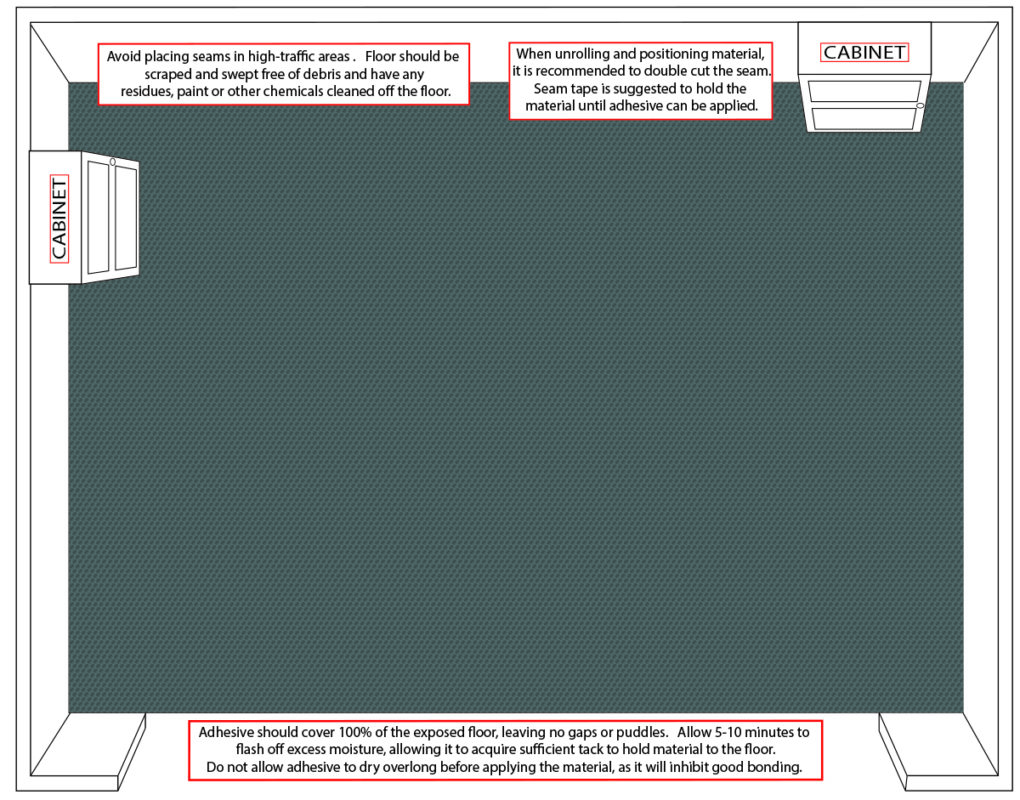
Common accessories
When using any sort of trim, it is advised to leave a gap between the interior edge of the slot and the mat edge to allow for some floating of the mat due to temperature extremes. Do not overlap two mats together as this constitutes a tripping hazard, traps moisture, and could create buckling or warping.
- Seam Tape – 4” wide, single-sided adhesive tape, applied on the underside of the flooring, that allows the customer to connect two pieces of flooring, but still lets the entire mat ‘float’ from contraction and expansion due to temperature.
- Center trim – 4” wide double-slotted polyvinyl strip, meant to fit the ends of two mats together and cover the edges to prevent a trip hazard at the seam. Center trim will also allow the two mats to ‘float’ a bit to prevent buckling at the seam due to expansion or contraction from temperature extremes.
- Edge Trim – 4” single-slotted polyvinyl strip which has a tapered edge to provide a more complete look to a flooring mat.
- Threshold Trim – is a solid vinyl strip, which can be used with or without a G‑Floor® mat. Threshold trim is 4” polyvinyl strip with a tapered edge and is adhered to the entrance of the garage to prevent drafts, accumulation of dirt, debris, bugs and water from getting into the garage.
- Adhesive on concrete – G‑Floor can be adhered to a concrete subfloor for a more permanent installation. Use an acrylic or water-based pressure sensitive adhesive, with an aggressive bond and permanent tack.
Threshold Installation
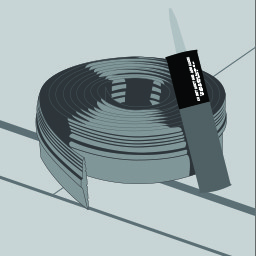
1. Threshold kit contains: Threshold trim and tube of adhesive. If the threshold is curled from being rolled, unroll and allow to relax for 2 hours. Allowing it to relax in sunshine may speed up the process.
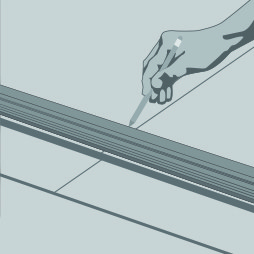
2. Place the threshold trim under garage door and outline both sides of the trim with a pencil. Trim the length if needed. Ribbed section should make contact with the weather stripping on the bottom of the garage door.
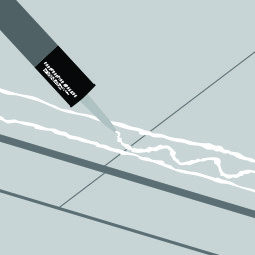
3. Apply polyurethane adhesive to the floor between the pencil marks. Be sure to keep the adhesive between the lines.
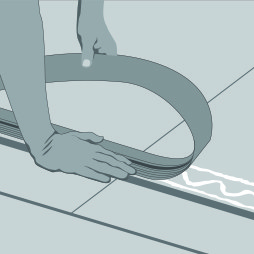
4. Apply trim from one side and work your way across, pressing trim down firmly as you go. Remove any excess adhesive before lowering the door.

5. Lower the door onto the threshold trim and allow adhesive to set up overnight.
Tips and Tricks
What is a “Floating Mat”?
- A G‑Floor mat that is unsecured, has no stationary objects on top of it and does not butt up against the wall, is considered a “floating mat”.
What does “No Adhesive Required” really mean?
- ‘No adhesive required’ applies when G‑Floor is used as a Parking Pad. Simply roll it out and park your car / boat / golf cart / motorcycle / etc on the mat. If you’re leaving heavy objects on the mat for an extended period (such as a boat over the winter) you may experience buckling due to expansion and contraction in extreme weather changes.
- When using G‑Floor other than as a Parking Pad, adhesive may be recommended.
- Choose an appropriate adhesive for the surface involved.
- When G‑Floor is used as a full floor installation, also known as wall-to-wall installation we would recommend adhesive be used.
- We do not recommend using G‑Floor on rubber, cushioned flooring, stripwood, gypsumbase underlayment or lightweight concrete.
Leave a 1” gap from any wall or heavy object
- When rolling out G‑Floor, be certain to leave at least an inch of space from the edge of the mat to a wall or any heavy object like a cabinet or tool box. This will help prevent buckling or wrinkles.
• Expansion and contraction
- G‑Floor is 100% polyvinyl in its construction and is prone to expansion and contraction due to temperature extremes. If it is not secured to the underfloor in some manner, it will move around slightly.
- If you have heavy objects on the mat, and adhere the mat down completely, expansion and contraction issues will be avoided.
• Should I use double sided tape?
- Double sided tape should only be used on the leading edge of the mat, at the entrance of the garage, if needed. Most of the time, the parking pad is heavy enough and tape is not needed.
- We do not recommend using double sided tape around the perimeter of any parking pad, as it can cause the center of the mat to buckle.
• What if I have a drain in my garage?
- If there is a drain in your garage, the drain will have to be considered when placing a mat or doing a permanent installation. For a permanent installation, a hole will have to be cut in the material corresponding to the drain before it is adhered to the concrete. Alternately, if there is a drain cover with screws to hold it in place, get a longer screw of the same size and cut a slightly smaller diameter hole in the mat than the size of the drain cover, then secure the cover back over the mat.
• What if I have a pole in my garage?
- Similar to a wall or heavy object, leave one inch of space from the edge of the mat to the support pole. The mat may have to be trimmed to accommodate this.
